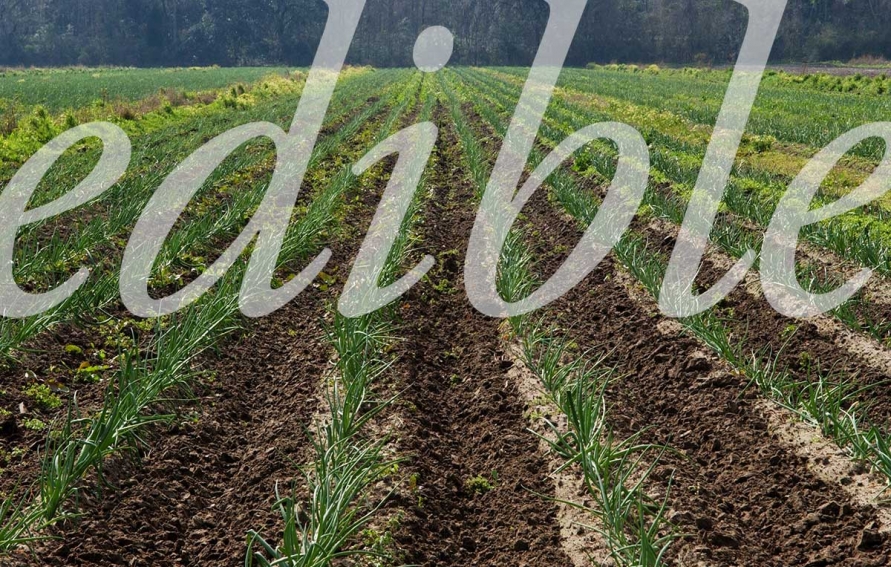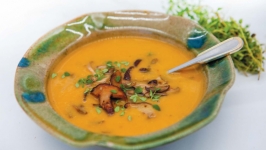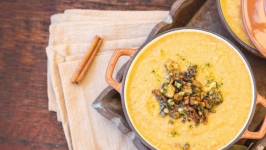Ingredients
- 6 quarts cold water
- 2 pounds beef bone marrow and/or knuckle bones
- 2 tablespoons apple cider vinegar
- 2 pounds bone-in cuts of meat
- 1 teaspoon sea salt
- 1 teaspoon freshly cracked black pepper
- 3 cups carrots cut into 2-inch (5 cm) pieces
- 3 cups celery cut into 2-inch (5 cm) pieces, leaves left on
- 2 fresh or dried bay leaves
- 10 whole black peppercorns
- 1 large onion, peeled and quartered
- 2 cloves garlic, whole and unpeeled
- 8 sprigs parsley
Instructions
Preheat the oven to 400°. In a 12-quart stockpot, combine water, bone marrow and apple cider vinegar. Allow bones to soak in the solution for 1 hour, to draw out calcium from the bones.
Reserving soaking solution in stockpot, place meaty beef bones on a sheet pan. Sprinkle evenly with sea salt and pepper. Roast in oven for 40 to 60 minutes to produce a crispy, brown exterior, which will ultimately help flavor the stock. Note that some cuts, such as oxtails, require less cooking time.
Once bones brown, remove them from oven. Using tongs, add them back to the stockpot. Bring water to a boil over high heat, uncovered. A foamy scum may develop on surface of the stock once a rolling boil is reached. If you like, you can skim this and discard. The foam is natural coagulated lipoprotein. It's not harmful but it isn't pretty either and may cloud the stock.
Add remaining ingredients, except parsley, to the pot (this will be added at the very end of cooking), cover and reduce heat to low, maintaining a gentle simmer. It's important to keep the stockpot covered, as this allows the stock to bubble away for hours without fear of the liquid evaporating.
Simmer for anywhere from 12 to 24 hours, depending on how much time you have, adjusting heat up or down as needed. A long cooking time allows more digestionenhancing gelatin to be released from the bones into the stock and enhances its flavor. If you have time for the 24-hour stock, occasionally check to ensure the meat is covered with liquid, adding more water as needed. Ten minutes before removing stock from the heat, add parsley. Once done, remove from heat and cool uncovered for 10 minutes. Using tongs, remove large bones and discard.
Strain stock with a chinois or large strainer. The stock may be used immediately. However, when fully cooled in the refrigerator, any fat will rise to the surface and congeal. Use a slotted spoon to carefully scoop off fat and set aside for reuse (it's great for sautéing vegetables or frying eggs). This step allows the cook to control the amount of fat in the final dish.
Recipe Note
Store stock in a glass container in the fridge for up to a week, or stock may also be pressure canned to remain shelf-stable for up to a year. Stocks may be stored in the freezer for several months.
To freeze, add stock to a 1-quart glass Mason jar, making sure to allow 3 inches of room in the jar for the liquid to expand in the freezer. Resist boiling the jar in a pot of water to thaw; the glass jar can break. Instead, defrost on the counter, in the fridge or, in a pinch, in a bowl of warm water.
Recipe excerpted from Back to Butter: A Traditional Foods Cookbook (Fair Winds Press, 2014) by Molly Chester and Sandy Schrecengost.








